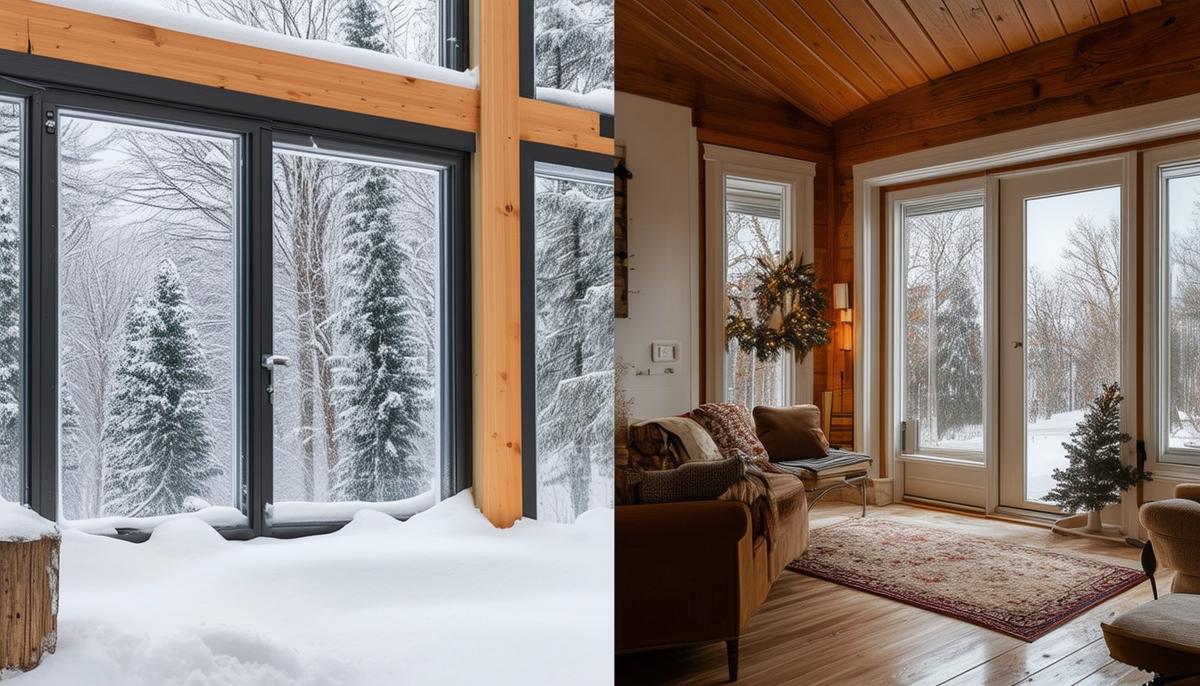Choose Insulation Wisely
Insulation is crucial in extreme cold climates. Let's examine options like closed-cell spray foam, rigid foam boards, and fiberglass batts.
Closed-cell spray foam offers a high R-value, acts as a moisture barrier, and adheres strongly to surfaces. However, it's expensive and might require professional application.
Rigid foam boards have a good R-value, resist water, and are easy to handle. They can be installed between studs or across entire walls, but can't flex or fill irregular spaces as well.
Fiberglass batts are budget-friendly and simple to install for DIY enthusiasts. Their R-value isn't as high, so install them tightly for best results.
Thermal bridging occurs when cold penetrates through parts of your home's structure. Using continuous exterior insulation or double-stud walls can help prevent this issue.
Consider local temperatures and your budget when choosing insulation. High R-values are essential in subzero climates, but proper installation with minimal air gaps is equally important.

Manage Moisture and Air Sealing
Managing moisture and air sealing is vital for maintaining a healthy, comfortable living space in cold climates. Here's how to approach it:
- Start with caulking around windows, doors, and wall penetrations. It's your defense against small gaps that become drafty problems in winter.
- Consider housewrap as a shield against the elements, blocking air leakage while allowing moisture to escape. Proper installation is key—avoid tears or loose edges.
- Air barriers are crucial for reducing airflow while maintaining wall breathability. When applied correctly, they help lower energy bills and prevent drafts.
- Focus on moisture barriers to keep unwanted mold and mildew at bay. Use materials like vapor retarders or impermeable paints to maintain a balance between allowing vapor to exit and preventing water from entering.
The essence of air sealing and moisture management is attention to detail. Small touches and thorough checks can make a big difference in your home's comfort level.

Window and Door Considerations
Windows and doors play a crucial role in maintaining your home's warmth. Let's explore the essentials:
Double-paned windows with low-E (low-emissivity) glass provide extra protection, minimizing heat loss and reflecting warmth back inside.
For frames, consider vinyl, fiberglass, or composite materials that resist the elements and don't conduct heat easily. Weather-resistant sealing is crucial to block rain, snow, and drafts.
Choose insulated doors with tight seals that fit snugly against the frame. Consider passive solar gain when positioning doors. An entrance oriented to catch the low winter sun acts as a natural heater.
Focus on insulation, tight seals, and orientation for both windows and doors. These factors significantly impact how your home handles extreme cold, keeping you comfortable regardless of outside temperatures.

Prepare for Snow Loads
Building in snow-heavy areas requires careful consideration of roof design. A well-pitched roof efficiently sheds snow, reducing the risk of weight-related issues and simplifying winter maintenance.
Steeper roof slopes allow snow to slide off easily, preventing buildup and potential ice formation. Minimize complex features like dormers and skylights, which can trap snow and hinder its natural descent.
Ice membrane shields are essential for winter roofing. Placed along roof edges, they provide extra protection against ice dams, which form when melted snow refreezes at the roof's edge.
Proper insulation of roof overhangs is vital to prevent heat loss, snow melt, and ice dam formation.
Design walkways and entrances with safety in mind:
- Wide, flat paths are easier to clear and safer to navigate in snowy conditions
- A covered entryway offers protection from the elements and reduces the risk of slipping on ice

By implementing these strategies for insulation, moisture control, and structural design, you'll create a warm, comfortable home that withstands cold weather challenges.
- Huelman P. Cold Climate Housing Program. University of Minnesota Department of Bioproducts and Biosystems Engineering.
- U.S. Department of Energy. Passive Solar Home Design.
- National Fenestration Rating Council. Window, Door, and Skylight Certification.
- USDA Forest Service. Storage of Lumber. Agriculture Handbook No. 531.
